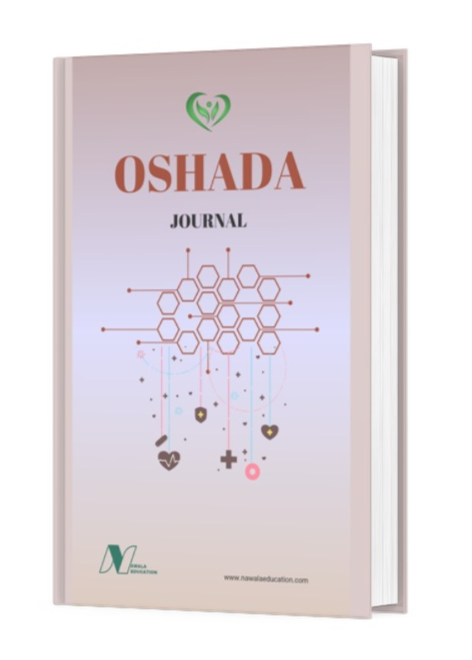Effectiveness of Mobile Health (mHealth) Use in Monitoring Patients with Chronic Diseases: A SWOT Analysis
DOI:
https://doi.org/10.62872/j0qvwm49Keywords:
Chronic Disease Patient Monitoring, Mobile Health (mHealth), SWOT AnalysisAbstract
Chronic diseases, such as diabetes mellitus, hypertension, heart failure and COPD, are the leading causes of morbidity and mortality in Indonesia, putting a strain on the health system and patients' quality of life. Continuous monitoring and effective management are essential, but are often constrained by limited access to healthcare services. Mobile-based health technology, or Mobile Health (mHealth), offers an innovative solution to improve monitoring of patients with chronic diseases, allowing patients to self-monitor their conditions and interact with medical personnel virtually. Despite its great potential, the implementation of mHealth faces challenges such as limited digital infrastructure, access gaps, as well as low digital literacy of patients, especially the elderly and those with low education. To address these challenges, a SWOT analysis was used to identify the strengths, weaknesses, opportunities and threats faced by this technology. The strengths of mHealth lie in real-time monitoring efficiency and accessibility, while the weaknesses lie in infrastructure dependency and potential inequality of access. Opportunities for mHealth development are promising, but face threats such as weak regulations and data misuse. The implementation of mHealth requires comprehensive policies, strict regulations, and continuous education to be effective in improving the quality of chronic disease monitoring in Indonesia
Downloads
References
Ahmad, F. F. R. (2021). Konsentrasi kalsium serum dengan fungsi paru penderita penyakit paru obstruksi kronik (ppok). Cv. Azka pustaka.
Andhani, A. Z., Ramalinda, D., Jayadi, Y. Y., Pramudianto, A., Rahayu, T., Sutisna, T., ... & Muchsam, Y. (2024). Dasar-Dasar Rekam Medis: Panduan Praktis untuk Pemula. Penerbit Kbm Indonesia.
Ardiansyah, A., & Rusfian, E. Z. (2020). Eksplorasi Aspek–aspek Penghambat Penerimaan User Telemedicine pada Daerah Tertinggal di Indonesia Exploration of Barriers to User Telemedicine Acceptance in Disadvantaged Areas in Indonesia. Sciences (JEHSS), 3(2), 671-681.
Budiman, S. V., Ratag, G. A., & Wahongan, G. J. (2023). Analisis Kualitatif Mengenai Persepsi dan Pengetahuan Masyarakat tentang Telemedicine. Medical Scope Journal, 4(2), 170-177.
Cao, W., Wang, J., Wang, Y., Hassan, I. I., & Kadir, A. A. (2024). mHealth App to improve medication adherence among older adult stroke survivors: Development and usability study. Digital Health, 10, 20552076241236291.
Deniz-Garcia, A., Fabelo, H., Rodriguez-Almeida, A. J., Zamora-Zamorano, G., Castro-Fernandez, M., Alberiche Ruano, M. D. P., ... & WARIFA Consortium. (2023). Quality, usability, and effectiveness of mHealth apps and the role of artificial intelligence: current scenario and challenges. Journal of Medical Internet Research, 25, e44030.
Fauzi, M. R., Saimi, S., & Fathoni, F. (2024). Tantangan dan Solusi Administrasi Kesehatan di Era Digital (Tinjauan Literature Review atas Implementasi Teknologi). AL-MIKRAJ Jurnal Studi Islam Dan Humaniora (E-ISSN 2745-4584), 5(01), 1093-1103.
Febiarthy, A., & Martha, E. (2023). PENGGUNAAN MHEALTH PADA PASIEN PASCA RAWAT INAP PENYAKIT KRONIS: LITERATURE REVIEW. JURNAL RISET KESEHATAN POLTEKKES DEPKES BANDUNG, 15(2), 294-307.
Handayani, P. W. (2021). Konsep dan Implementasi E-Health-Rajawali Pers. PT. RajaGrafindo Persada.
HIMSS23 (2023) https://gkc.himss.org/news/himss23-was-roaring-success, di akses pada January 25, 2025
Khamaj, A., & Ali, A. M. (2024). Examining the usability and accessibility challenges in mobile health applications for older adults. Alexandria Engineering Journal, 102, 179-191.
Kustiyanti, S. A. (2023). Smart Hospital: Konsep, Implementasi, dan Tantangan. Transformasi Rumah Sakit Indonesia Menuju Era Masyarakat, 5, 161.
Makisurat, J. G., Sarwo, Y. B., & Wibowo, D. B. (2018). Pelaksanaan Pelayanan Gawat Darurat Bagi Peserta Bpjs Kesehatan Di Rumah Sakit Umum Daerah Ratu Aji Putri Botung Ditinjau Dari Keputusan Menteri Kesehatan Nomor 856/Menkes/Sk/Ix/2009 Tentang Standar Instalasi Gawat Darurat (IGD) Rumah Sakit. Soepra Jurnal Hukum Kesehatan, 4(1), 112-131.
McCool, J., Dobson, R., Whittaker, R., & Paton, C. (2022). Mobile health (mHealth) in low-and middle-income countries. Annual Review of Public Health, 43(1), 525-539.
Minutolo, A., Esposito, M., & De Pietro, G. (2017). Optimization of rule-based systems in mHealth applications. Engineering Applications of Artificial Intelligence, 59, 103-121.
Mulana, V. A. S. (2020). Potensi Penerapan Mhealth Dalam Menanggulangi PTSD (Post Traumatic Stress Disorder) Pasca Bencana Alam Di Indonesia, Sebuah Review Non-Sistematik. Prosiding" Penguatan Pendidikan Tenaga Kesehatan di Era Industri 4.0".
Paul, M., Maglaras, L., Ferrag, M. A., & Almomani, I. (2023). Digitization of healthcare sector: A study on privacy and security concerns. ICT Express, 9(4), 571-588.
Petrocchi, S., Iannello, P., Lecciso, F., Levante, A., Antonietti, A., & Schulz, P. J. (2019). Interpersonal trust in doctor-patient relation: Evidence from dyadic analysis and association with quality of dyadic communication. Social science & medicine, 235, 112391.
Stoumpos, A. I., Kitsios, F., & Talias, M. A. (2023). Digital transformation in healthcare: technology acceptance and its applications. International journal of environmental research and public health, 20(4), 3407.
Wahananingtyas, N. L., Bakar, A., & Harmayetty, H. (2025). E-Health Applications Support Medication Adherence in Coronary Heart Disease Patients. Indonesian Journal of Innovation Studies, 26(1), 10-21070..
Downloads
Published
Issue
Section
License
Copyright (c) 2025 Lyna M. N. Hutapea, Dwight Mahaputera Marulitua Hutapea (Author)

This work is licensed under a Creative Commons Attribution-ShareAlike 4.0 International License.

This work is licensed under a Creative Commons Attribution-ShareAlike 4.0 International License.











